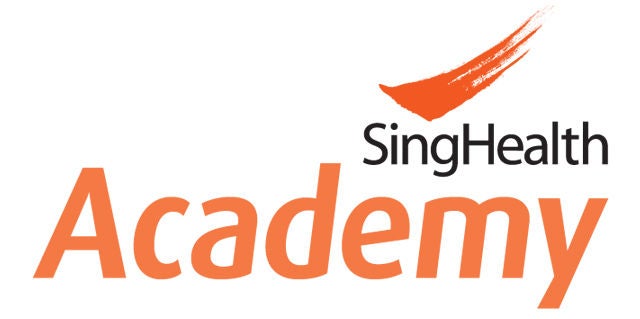SingHealth Academy will NEVER ask you to transfer money over a call. If in doubt, call the 24/7 ScamShield helpline at 1799, or visit the ScamShield website at www.scamshield.gov.sg.
Symposium 1: Evidence-based Chinese Medicine in Neurological Disorders, Rehabilitation Medicine & Ophthalmological Disorders
Symposium 1: Evidence-based Chinese Medicine in Neurological Disorders, Rehabilitation Medicine & Ophthalmological Disorders
Date: 6 July 2025, Sunday | Time: 1000 - 1200 | Venue: The NAK Auditorium, Academia
Co-Chairs: Assoc Prof Prakash Kumar Manharlal (NNI), Asst Prof Wee Tze Chao (CGH) & TCMP Cui Shuli (SGH)
TOPIC 1:
Acupuncture in Post-Stroke Rehabilitation
Speaker: Dr & TCMP Huang You Yi (SKH)
Acupuncture in post stroke rehabilitation has been often part of standard of care in many East Asian countries but yet in Singapore its adaptation into mainstream post-stroke care services has been limited and progress slow. We will explore the current evidence of acupuncture in stroke rehabilitation and touch on what lies ahead in integrating acupuncture into post-stroke rehabilitation in Singapore.
TOPIC 2:
Acupuncture in Migraine (AIM)
Speaker: Dr Nijanth Manohararaj (NNI)
Migraine stands as one of the most prevalent and disabling neurological disorders worldwide, affecting approximately 10% of Singapore's population, with an annual economic burden exceeding one billion SGD. The complex pathophysiology of migraine, involving neural, vascular, and inflammatory mechanisms, often presents therapeutic challenges. While conventional pharmacological treatments remain foundational, their limitations in efficacy, tolerability, and accessibility necessitate exploration of complementary approaches. Acupuncture, a traditional Chinese treatment method with centuries of clinical application, has demonstrated effectiveness across various medical conditions, including migraine. Growing high-quality evidence supports its role in reducing migraine frequency and intensity through multiple mechanisms, including pain modulation, neurotransmitter regulation, and anti-inflammatory effects. Real-world data confirms improved treatment adherence, reduced healthcare utilisation, and favourable cost-effectiveness when integrated with standard care. As healthcare evolves towards more comprehensive treatment approaches, acupuncture's documented efficacy and safety profile position it as a significant component in modern migraine management, particularly beneficial for patients seeking non-pharmacological alternatives.
TOPIC 3:
Acupuncture for Neuropathy
Speaker: TCMP William Peh (SCHMI)
Peripheral neuropathy (PN) is a condition characterized by nerve damage leading to pain, numbness, and weakness, primarily in the hands and feet. Conventional treatments often include medications, physical therapy, and lifestyle modifications, but these approaches may not be effective for all patients and can have significant side effects. Acupuncture, a key component of traditional Chinese medicine, has gained increasing attention as a complementary therapy for PN. Research suggests that acupuncture may alleviate neuropathic pain, improve nerve function, and enhance overall quality of life by promoting blood circulation, reducing inflammation, and modulating the nervous system. Various acupuncture techniques have shown promises in clinical studies for relieving symptoms of PN. Despite growing evidence supporting its efficacy, further large-scale, randomized controlled trials are necessary to establish standardized treatment protocols and confirm long-term benefits. This presentation explores the possible mechanism and pathway, clinical evidence, and potential benefits of acupuncture for PN, highlighting its role as a viable adjunct therapy. By integrating acupuncture with conventional treatments, healthcare providers may offer a more holistic and patient-centred approach to managing PN, ultimately improving patient clinical outcomes and quality of life.
TOPIC 4:
Chinese Herbal Medicine and Acupuncture in the Management of Alzheimer's Disease
Speaker: TCMP Ng Hui Ping (SCHMI)
Alzheimer’s Disease (AD) is a progressive neurodegenerative disorder characterized by an insidious onset resulted from neuronal damage in the brain, and it is the most prevalent form of dementia among the aging population. While the dementia patients struggling with the daily activities and neuropsychiatry symptoms including apathy, depression, anxiety as the disease progresses, the quality of life of the caregivers are also impacted due to the financial, social, mental, physical, and caregiving burden. With evidence indicating a rising prevalence and an anticipated increase in the associated burden of dementia, this trend imposes substantial healthcare financial strain and psychological stress on caregivers. AD was documented in various TCM classics including Huangdi Neijing as “forgetfulness (喜忘/健忘)”, “dementia (痴呆)”, and “collapse due to deficiency or syncope (虚脱/发厥)”. There is growing interest in research on acupuncture and Chinese herbal medicine as interventions for AD, primarily due to their potential to complement the conventional therapies. Many studies have suggested that acupuncture and/or Chinese herbal medicine can potentially provide more comprehensive and holistic symptom management.
TOPIC 5:
Acupuncture & Herbal Formulation for Dry Eye
Speaker: Prof Louis Tong (SNEC)
Dry eye is a common disease with great health burden and no satisfactory treatment. Traditional Chinese medicine has been used but studies have been inconclusive. To address this issue, we conducted a randomised investigator-masked study. Eligible participants (total 150) were treated with artificial tear (AT) alone, with added eight sessions of acupuncture (AC) or additional daily oral herb (HB) over a month. Participants treated with AC were more likely to respond symptomatically than those on AT (88% vs 72%, p=0.039) with a difference of 16% (95% CI: 0.18 to 31.1). The number-to-treat with AC to achieve response in one person was 7 (3 to 157). Participants in the AC group also had reduced conjunctival redness (automatic grading with Oculus keratograph) compared with AT (p=0.043) and reduced tear T helper cell (Th1)-cytokine tumour necrosis factor α (p=0.027) and Th2-cytokine interleukin 4 concentrations (p=0.038). AC was not significantly superior to AT in other outcomes such as tear osmolarity, tear evaporation rates, corneal staining and tear break-up times. No significant adverse effects were encountered. HB was not significantly different in the primary outcome from AT (80% vs 72%, p=0.26). AC is safe and provides additional benefit in mild to moderate dry eye.
Stay Healthy With
© 2025 SingHealth Group. All Rights Reserved.
















